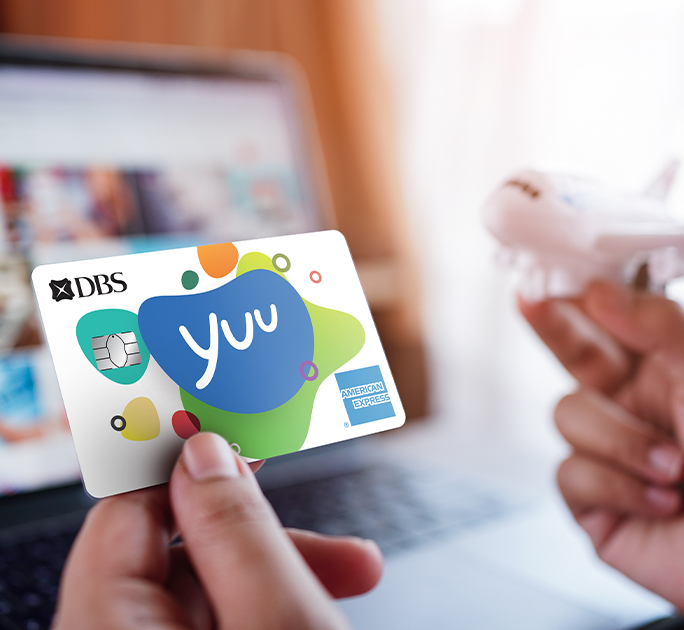Personal loans vs line of credit
![]()
If you’ve only got a minute:
- Personal loans and lines of credit are examples of unsecured loans.
- A personal loan is a fixed term loan whereas a line of credit is a revolving loan.
- Whether you take up a personal loan or a line of credit, you should always look at your circumstances before committing.
![]()
There may come a time in your life when you need to take a loan.
Although the idea of debt tends to come with a negative connotation, not all debts are bad. They can come in handy to bridge a temporary financial gap, or if you need to put your savings to work harder for better returns elsewhere.
Loans primarily come in 2 forms – secured and unsecured loans. Secured loans require a collateral to be pledged as a security, which will be forfeited in the event of a default.
On the other hand, unsecured loans do not require any type of collateral. Instead, lenders are approved based on a borrower’s creditworthiness. Unsecured loans can be either term or revolving loans.
Read more: Why is my credit score important?
Types of unsecured loans
2 examples of unsecured loans are a personal loan, and a line of credit.
Personal loans
Personal loans are general purpose loans, meaning there is no fixed use for the funds borrowed. They are usually repaid over a fixed number of repayments (usually monthly) spread over a pre-agreed tenure.
Depending on the lender, interest rates can range between 3.7% per annum (p.a.) and 4.5% p.a.. There is also a one-time processing fee ranging from 1% to 6% and an early repayment fee if you choose to repay the loan before the end of its term.
DBS Personal Loan allows you to borrow up to 10 times your monthly salary, with a loan tenure ranging from 6 months to 5 years. The fixed interest rates start from 2.68% p.a., and the processing fee is 1%.
Find out more about: DBS Personal Loan
Line of credit
A line of credit is a revolving loan, also known as a flexible loan. This means that there is no fixed tenure on the loan.
In a sense, it is similar to a credit card as you are taking a loan from the bank up to a pre-specified limit known as the “credit limit”. This limit is reset once the loan has been repaid. While interest on the loan is only charged upon utilisation of the available funds, there is usually an annual fee to open a line of credit.
A line of credit can be seen as “standby cash”. Depending on the lender, interest rates range between 18.6% p.a. and 20.9% p.a.. The repayment period can range from daily to monthly or yearly with no early repayment penalty.
DBS Cashline is a type of line of credit that allows you to get up 10 times your monthly salary if your annual income is $120,000 and above. Interest rates are around 22.9% p.a., which works out to around 0.07% per day. This is lower than credit card interest rates.
|
|
Personal loan |
Line of credit |
|---|---|---|
| Flexibility of tenure* | 6 months to 5 years | Flexible |
| Repayment schedule | Agreed upon and fixed (e.g. monthly) | Flexible |
| Interest | Charged upon disbursement of the loan, regardless of whether you use the funds or not | Pay-as-you-use |
Read more: An easy guide to unsecured loans
Find out more about: DBS Cashline

Reasons to take up a personal loan
There are various different reasons for people to take up a personal loan, here are some common examples.
Debt consolidation
Grouping your credit card and high interest debts together can make it easier for you to pay off your balances without getting overwhelmed.
Renovating your home
After spending most of your savings on a home, paying for renovation costs can be difficult. A personal loan can help to provide you with the immediate cash which you need as you prepare to move into your dream home.
Paying medical bills
Medical bills are another reason you might consider taking up a personal loan.
In the unfortunate event of a untoward diagnosis and insufficient insurance coverage, you may need access to spare cash for the cost of your medical treatments.
Reasons to take up a line of credit
Others may choose to take up a line of credit if they require the funds for a shorter term, or on a more ad hoc basis.
Alleviate a short-term cash flow problem
A delay in salary payout could be disruptive to your cashflow situation. Having a line of credit can assist to tide you over temporarily, especially if it is for a short period as interest rates are often calculated on a daily basis.
The interest rates charged on a line of credit are lower than credit cards or licensed moneylenders. As the interest is only charged on the amount you use, it could be more suitable for this circumstance than a personal loan.
Non-retail spending
Retail spending such as shopping for shirts, bags, electronic devices or dining out may be more beneficial when charged to a credit card since credit cards often come with rewards.
However, when it comes to expenses such as car maintenance or home renovation, a line of credit could be a better option since the interest rates are lower than that of a credit card, and you have the flexibility of using the funds only when you need them.
Read more: Use your credit card to your advantage

In summary
Using a line of credit gives you flexibility in drawing down and repaying the funds as and when you need it, as often as you need it – as long as you are spending within your credit limit.
In comparison, fixed-term personal loans are disbursed in one lump sum. This means that you need to know the amount you need and how long you need it for from the get-go. This may be better if you need to make a big-ticket purchase that requires a lump sum payment.
Unless you intend to carry large balances for long periods of time, a credit card may offer cheaper short-term flexibility compared to a personal line of credit. Additionally, credit card purchases provide a grace period during which no interest is incurred if the balance is paid off in full.
At the end of the day, which type of credit you opt for depends on your personal needs and payment preferences. Regardless of which you choose, it is important to pay all your debts on time and in full to avoid impacting your credit score negatively.
Read more: Rolling over credit card debt is no game
Ready to start?
Check out digibank to analyse your real-time financial health. The best part is, it’s fuss-free – we automatically work out your money flows and provide money tips.
Speak to the Wealth Planning Manager today for a financial health check and how you can better plan your finances.
Disclaimers and Important Notice
This article is meant for information only and should not be relied upon as financial advice. Before making any decision to buy, sell or hold any investment or insurance product, you should seek advice from a financial adviser regarding its suitability.








That's great to hear. Anything you'd like to add? (Optional)
We’re sorry to hear that. How can we do better? (Optional)